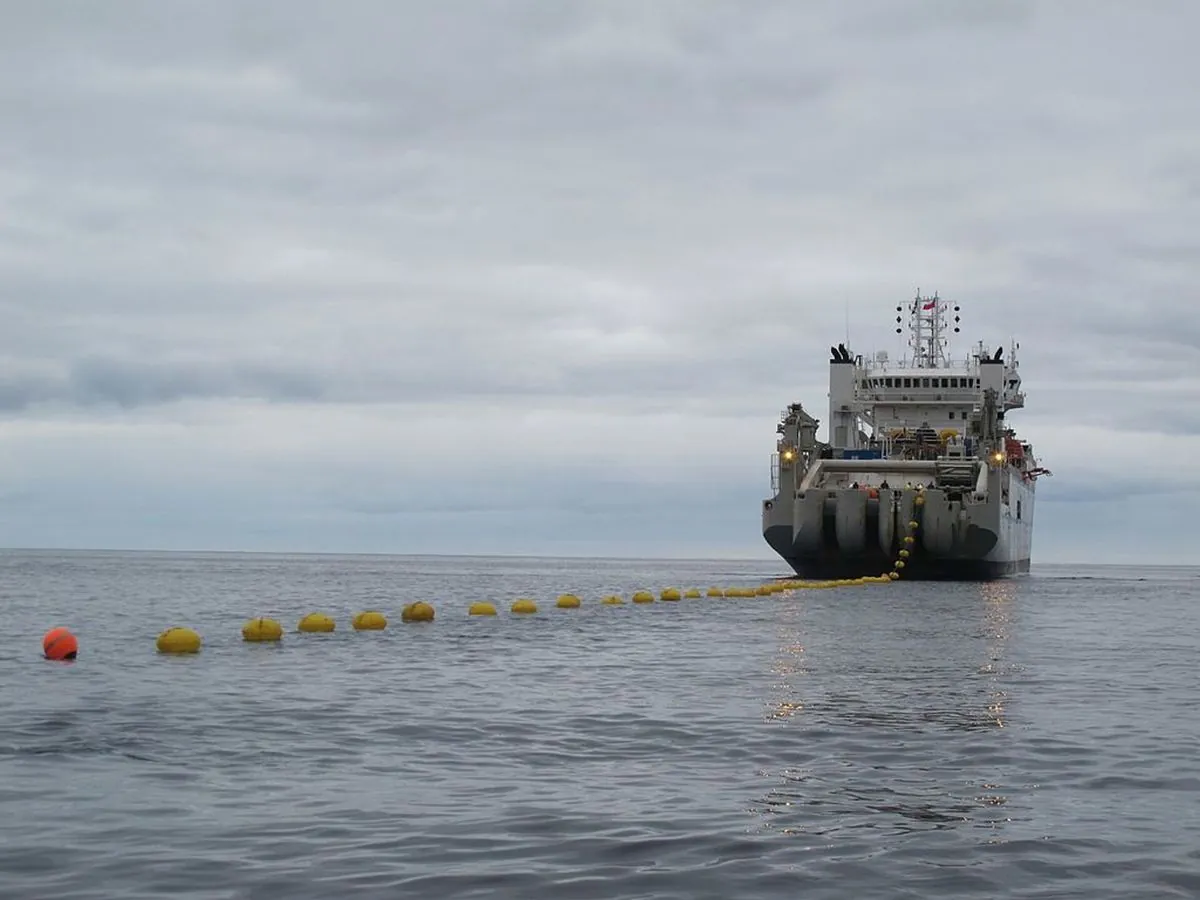The South China Sea, a vast expanse covering approximately 3.5 million square kilometers, has become a focal point of geopolitical tension, impacting the vital undersea cable networks that form the backbone of internet connectivity in Southeast Asia. As China asserts its dominance over the region, cable companies face unprecedented challenges in maintaining and expanding this critical infrastructure.
Xi Jinping's China has intensified its claims over the strategic waterway, leading to increased difficulties for cable companies seeking to operate in the area. The situation has resulted in prolonged repair times, delayed construction of new cables, and rising costs for telecommunications providers.
One notable incident occurred in April 2023, when a cable repair ship, escorted by a Vietnamese naval vessel, was confronted by a Chinese coast guard ship within Vietnam's exclusive economic zone. This encounter, previously undisclosed, highlights the growing assertiveness of Chinese maritime forces in the region.
The South China Sea's importance extends beyond telecommunications. It is estimated to contain 11 billion barrels of oil and 190 trillion cubic feet of natural gas, making it a valuable resource-rich area. Additionally, it serves as one of the world's busiest shipping lanes, with approximately one-third of global shipping passing through its waters.
The challenges faced by cable companies in the South China Sea are compounded by the area's unique characteristics. With an average depth of about 1,000 meters and a deepest point of 5,559 meters, the sea presents technical challenges for cable installation and maintenance. Moreover, the region is home to over 3,000 species of fish, adding to the complexity of underwater operations.
The current situation has led to significant delays in cable repairs. Since 2021, faults in several cable systems have routinely taken more than two months to fix, a stark contrast to the typical repair times in other parts of the world. This has resulted in strained telecommunications, as evidenced by the eight-month repair process for all five international subsea cables serving Vietnam in 2022.
The Southeast Asia-Japan 2 (SJC2) cable system, a crucial project spanning 6,500 miles, has faced substantial delays due to Chinese permitting issues. Originally planned to enhance connectivity within Asia, the project is now nearly four years behind schedule, highlighting the severe impact of geopolitical tensions on infrastructure development.
"The Chinese government has always taken a welcoming attitude and supported other countries and telecommunications companies in laying international submarine cables in waters under China's jurisdiction."
However, the reality on the ground appears to contradict this statement, with many companies reporting increased difficulties in obtaining permits and operating in the region.
The United States has also played a significant role in shaping the current landscape. Since 2020, when it first blocked a cable project linking the U.S. to Hong Kong over security concerns, Washington has intensified its efforts to limit Chinese involvement in international cable projects. This has led to the rerouting of several transpacific cable projects to avoid the South China Sea, despite the increased costs and technical challenges associated with alternative routes.
As the industry grapples with these challenges, it's worth noting that submarine cables have a long and storied history. The first submarine communications cable was laid across the English Channel in 1850, and the technology has evolved significantly since then. Today's modern fiber-optic cables can transmit up to 400 Gbps per fiber pair, a testament to the rapid advancement of telecommunications technology.
The current geopolitical situation in the South China Sea presents a complex dilemma for the submarine cable industry. With no easy solutions in sight, companies must navigate the delicate balance between meeting the growing demand for connectivity and addressing the security concerns of various nations. As the dispute continues to evolve, the future of internet infrastructure in Southeast Asia remains uncertain, with potential implications for global telecommunications networks.
